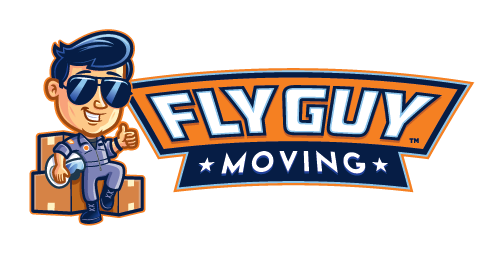Elmhurst IL Transport Accessibility
October 8, 2024
Moving to a new city can be exciting, but the logistics can be overwhelming. Fly Guy Moving is here to make your transition into Elmhurst, IL smooth and stress-free. In this post, we will explore
Elmhurst's transport accessibility
, which plays a crucial role in your daily commute and overall moving experience.
Understanding Transport Accessibility in Elmhurst, IL
Transport accessibility refers to how easy it is for people to reach various destinations using different modes of transportation. It's a critical component of urban living, affecting everything from daily commutes to overall quality of life. For residents and those planning to move to Elmhurst, understanding the city’s transport options is key to making informed decisions.Why Is Transport Accessibility Important?
- Quality of Life : Good transport options mean less time commuting and more time enjoying life.
- Property Value : Areas with better transport links often see higher property values.
- Environmental Impact : Efficient public transport can reduce the number of cars on the road, lowering emissions.
Public Transit Options in Elmhurst
Elmhurst, IL has a well-rounded public transit system that caters to the needs of its residents.Metra Rail Services
Elmhurst is served by the Metra rail system, which provides a convenient and efficient way to travel to and from Chicago and other surrounding areas.- Description of the Metra System : Metra is the primary commuter rail system serving the Chicago metropolitan area .
- Schedule and Major Routes : The Union Pacific West Line serves Elmhurst, offering frequent services to downtown Chicago.
- How to Access Metra Services in Elmhurst : The main station is located at 128 W. First Street, Elmhurst.
Bus Services
Elmhurst also offers extensive bus services to facilitate local and regional travel.- Overview of Bus Services Available : Several bus routes serve the city, making it easy to navigate both Elmhurst and nearby areas.
- Primary Bus Routes and Major Stops : Key routes include the 313, 332, and 715, stopping at major business districts, hospitals, and residential areas.
- Frequency and Schedule Details : Most buses run every 15-30 minutes during peak hours.
- Elmhurst Station, Elmhurst Hospital Every 15 minutes
- Elmhurst College, Yorkville Shopping Every 20 minutes
- Addison, Oak Brook, Elmhurst Downtown | Every 30 minutes
Road Infrastructure and Driving in Elmhurst
For those who prefer driving, Elmhurst offers a well-maintained road network and multiple options to ensure a smooth journey.Highways and Major Roads
Elmhurst's strategic location provides excellent highway access , making it convenient for residents and visitors alike.- Key Highways Serving Elmhurst :
- I-290 : Also known as the Eisenhower Expressway, it provides a direct route to downtown Chicago.
- I-294 : Known as the Tri-State Tollway, it is crucial for regional travel.
- Route 83 : This state highway connects Elmhurst to other suburbs and regions.
- Downtown Chicago 30-45 minutes
- Regional travel, connecting suburbs | Varies by destination, Suburbs around Elmhurst | 20-30 minutes
Local Road Conditions
Elmhurst takes pride in maintaining its local roads to ensure smooth driving experiences.- Quality and Maintenance : Roads are regularly maintained and repaired to minimize wear and tear.
- Traffic Congestion : Congestion is generally manageable, but peak hours (7-9 AM and 4-6 PM) could see increased traffic.
- Traffic Flow and Safety Measures : Elmhurst employs various measures like traffic lights, signs, and crosswalks to manage flow and ensure safety.
Parking Facilities
Finding parking in Elmhurst is straightforward with multiple options available.- Availability of Public and Private Parking : There are ample parking spaces, including public lots and private garages.
- Costs and Regulations Regarding Parking : Street parking may be free or metered, while garage spaces might have hourly or daily rates.
- Long-term Parking Solutions for Residents and Visitors : Monthly parking permits are available for residents and visitors requiring long-term parking.
Cycling and Walking in Elmhurst
Elmhurst is dedicated to promoting healthy lifestyles and environmentally friendly transportation options . Both cycling and walking are not only feasible but also enjoyable in this city.Bike-Friendly Infrastructure
Elmhurst aims to be a bike-friendly community with an increasing focus on cycling infrastructure.- Overview of Bike Lanes and Paths : The city offers a network of bike lanes and dedicated cycling paths to ensure safe and easy travel.
- Safety Measures and Dedicated Bike Facilities : Specific lanes, proper signage, and bike racks are commonplace, ensuring cyclists have safe routes.
- Community Initiatives to Promote Cycling : Programs like "Bike Elmhurst" offer events, workshops, and resources to encourage cycling among residents.
Pedestrian Pathways
Walking in Elmhurst is convenient and safe, thanks to well-maintained pedestrian pathways.- Accessibility for Pedestrians : Sidewalks are wide, well-lit, and regularly maintained.
- Description of Popular Walking Routes : Popular areas include the Prairie Path, Elmhurst City Centre, and parks like Wilder Park.
- Safety and Amenities for Pedestrians : Crossing signals, pedestrian bridges, and benches ensure a pleasant walking experience.
Accessibility for People with Disabilities
Elmhurst prioritizes making transportation and infrastructure accessible to everyone, including individuals with disabilities.Public Transport Accessibility
Public transport in Elmhurst is designed to be inclusive and user-friendly for people with disabilities.- Facilities and Services for People with Disabilities : Accessibility features in public transit systems include ramps, elevators, and priority seating.
- Accessibility Features of Metra and Bus Services : Metra stations are equipped with elevators and tactile strips, while buses have low floors and ramps.
Infrastructure and Facilities
Elmhurst’s infrastructure supports mobility and accessibility for individuals with disabilities.- Availability of Ramps, Elevators, and Accessible Pathways : Key public buildings and facilities are equipped with accessible features such as ramps and elevators.
- Special Programs or Aids Available in Elmhurst : There are programs to assist residents with disabilities, including transportation aids and mobility services.
Car Sharing and Ride-Hailing Services
Elmhurst offers modern car-sharing and ride-hailing services , adding flexibility to your transport options.Car Sharing Options
For those who prefer not to own a car, car-sharing services are a convenient alternative.- Description of Available Car-Sharing Services : Services like Zipcar are available, offering vehicles at hourly or daily rates.
- Benefits and How to Access These Services : Car sharing is cost-effective and eco-friendly. Vehicles are located at various spots around the city, and reserving a car is as simple as using an app.
Ride-Hailing Services
Ride-hailing services provide a flexible, on-demand transport solution.- Overview of Popular Ride-Hailing Options : Services like Uber and Lyft are widely used for their convenience and availability.
- Ease of Use and Coverage in Elmhurst : Ride-hailing apps are user-friendly, and coverage in Elmhurst is extensive, ensuring you can get a ride quickly.
- Cost Comparison with Other Transport Methods : Generally, ride-hailing costs more per trip compared to public transit but offers direct point-to-point service, which saves time.
Practical Tips for Navigating Elmhurst's Transport System
Whether you’re new to the area or a long-time resident, these tips can help you navigate Elmhurst’s transport system efficiently.Daily Commute Tips
Optimize your daily commute with these helpful strategies.- Suggestions for Efficient Commuting :
- Plan Ahead : Use apps and tools to check schedules and traffic conditions.
- Alternative Routes : Have a backup route to avoid congestion.
- Peak Hours : If possible, travel before or after peak hours to reduce commute time.
Transport Safety Tips
Ensure your safety while using Elmhurst’s various transport options.- General Safety Tips While Using Different Transport Modes :
- Stay Alert : Always be aware of your surroundings.
- Follow Rules : Adhere to traffic rules and guidelines.
- Use Crosswalks : Always use designated pedestrian crossings.
- Emergency Contact Numbers and Services : Keep essential contact numbers handy in case of emergencies.


